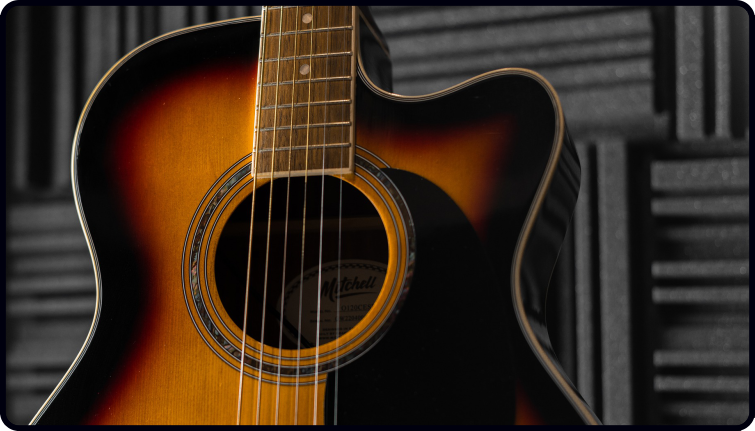Today, I want to talk about how you can speed up those pesky chord changes.
If you’re like most guitarists, no doubt there’s a chord change or two that is causing some issues in your playing.
…And it might be one that is stopping the flow of your songs like a car slamming on its breaks.
If you’ve ever sat for weeks on end trying to change between chords such as C, G, D, F, Bm, etc., wondering to yourself:
“Am I actually getting better at these chord changes?”
…Then you’ll know what I mean.
I remember trying to learn “Brown Eyed Girl” by Van Morrison and struggling for ages to master the C to D change in the song.
It was a struggle.
So, I decided to stop practising the song and spend time working on this specific chord change on its own.
After weeks of determined and relentless practice, when I went to practise the song again…
The chord change was shockingly no better than before!
In fact, in some ways, it was worse.
The main reason why was because I’d built up some bad habits with the chord change.
What I realised was doing was making the cardinal sin of taking all my fingers off the fretboard…
…And placing them on the next chord one by one.
This was a bad habit that caused a big, dreaded pause that ruined the song for me.
That is the main chord-changing mistake I see students make, and it’s definitely a habit you want to avoid.
So, when it comes to chord changes, here are two other things you want to keep in mind:
1 – Avoid double movements (a “double movement is where your fingers do NOT go directly to the correct string and fret in the new chord. Instead, they “shake”, wander, and move about in the air as they struggle to go to their desired destination).
2 – It’s a numbers game. Getting good at any chord change requires lots of methodical practice back and forth between two chords. For most people, this means 1000s of repetitions over time, but the good news is you can do 100 or so changes in a few minutes each day. The key is using good technique.
So be patient, focus on good technique, and choose just two chords to master changing between at first.
It’s simple advice, but it’s well worth keeping the above in mind when it comes to changing chords.
If you want a specific technique that will help you ensure you avoid the “double movement” mistake…
…And help you build up the numbers in a way that will break old habits, improve muscle memory, and help you see faster progress with your chord changes and songs…
You might want to try out my “Fake pivot” method.
This method is actually quite natural to do, is surprisingly simple, and I’ve not seen anyone else teach it.
Yes, it takes practice and focus but it will help, and best of all, if you stick with it, you will see real progress with your chord changes starting right away.
I’m teaching this in a new Dan Thorpe Acoustic Academy lesson which is out tomorrow.
To get this lesson and the other new ones (including my “No Chord Fingerstyle” song lesson), you will need to join by tomorrow night.
Go here to find out more about the Dan Thorpe Acoustic Academy
Have a great day of practice!
Dan Thorpe
Guitar Domination
P.S. This post was originally taken from Dan Thorpe’s private email list. To get blog posts like this sent to you which are full of great tips to make fingerpicking, strumming, and learning guitar more enjoyable (especially if you are over 40) join Dan’s list. It’s 100% free, HERE.


Add Comment